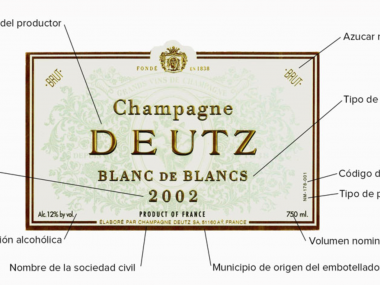It is no secret that wine is one of the favourite drinks of many, and how could it not be? It brings an unparalleled amount of flavours to the palate. But this majestic drink would not be able to reach us if it weren’t for its bottle. However, did you know that there is a wide range of wine bottles?
If you are here, it is because you want to know a little more about this interesting subject. In the following lines we will tell you all about the bottle format typology and we will answer the question of why they are currently 75 cl. bottles
Do you want to know more, read on!
What is bottle typology all about?
First of all, you need to understand the meaning of the word typology, which is the study of the types or varieties of certain things
Therefore, the “typology of bottles” talks about the most used or existing types of bottles in the world. As well as their characteristics and the way in which they are classified.
What influence does the type of bottle have on the preservation of wine?
It is no secret that when wine is bottled, its degradation or biological effect, which can lead to its decomposition, is considerably slowed down . However, the size of the bottle does not matter so much at this point, as long as it is made of glass or crystal, the type of bottle is not relevant.
On the other hand, although the shape of the bottle does not have such an important impact on the conservation of the wine, it does have an important impact on the commercial aspect. A good bottle will always be attractive to the consumer, and even more so if it complements its beauty with the amount of content it contains.
What is the history of wine bottles?
The process of bottling glass was not always as we know it today, since centuries ago containers made of different materials were used and evolved until the glass wine bottles were introduced in 1821. More specifically in Bristol, England.
Wine bottles with a capacity of 75 cl. or better known as 750 millilitres, are estimated to have originated between the 19th and 20th centuries. But their history is not known for certain.
What we do know is that this is the most widely used wine bottle size worldwide, becoming an icon among brands. This is so true that it is even rare to find a bottle of wine with a higher or lower content than this figure.
What are today’s wine bottles like?
Nowadays, there is an enormous variety of wine bottles on the market, which are classified according to their shape or containment capacity, but also according to the type of wine they are aimed at. Below, we will present them to you.
According to their shape
These are divided into five categories of bottles, which are specified according to the height of their neck, the thickness of their body and the shape of their spout. These are as follows:
Bordeaux
This is the most commonly found on the shelves of wine shops or supermarkets. It is a very popular bottle, which can be recognised by its cylindrical structure, its great height and its noticeably marked shoulders.
Burgundy
Now we talk about the oldest bottle format in the world, which is well known for its width, cylindrical body and rather sloping shoulders.
Rhine
This is the fusion of the two types mentioned above. It is known for being extremely elegant and for having considerably sloping shoulders.
Cava
The bottles for cava or sparkling wines are bottles that have a fairly long neck and can be recognised by their considerably thicker glass, in order to withstand the pressure exerted by the wine bubbles.
Jerezana
This bottle is closely related to the Bordeaux format, but with the difference that it has a much longer neck and a slight protrusion near the neck, not forgetting the fact that its shoulders are very pronounced.
According to their capacity
Now, the format of the bottles can also be measured according to their capacity, or the amount of liquids they are capable of holding. The most popular sizes are the following:
- Benjamin: 20 cl.
- Medium: 37.5 cl.
- Carnation: 62 cl.
- Standard: 75 cl.
- Magnum: 1.5 litres.
- Double Magnum: 3 litres.
- Rehoboam: 4.5 litres.
- Mathusalem: 6 litres.
- Salmanazar: 9 litres.
- Balthasar: 12 litres.
- Nebuchadnezzar: 15 litres.
- Damajuana: 16 litres.
- Solomon: 18 litres
What is the standard format of wine bottles today?
The truth is that, although there are a large number of sizes available to store this precious liquid, companies continue to opt for 75 cl. bottles.
Why are today’s bottles 75 cl. bottles?
The reason why the 75 cl. bottle has become the most widely used is not well known, but it does allow for greater control over the intake of the product and avoids residual content that will spoil the next day.
It is also believed to be the most practical type of bottle to make and it is much better for brands to package their products in containers of this size.
Does the size of the wine bottle matter?
To close this article today we will answer this last question, and we must say that yes, the size of the bottle does matter, but mainly in the preservation process, since a bottle with a higher liquid content inside will oxidise more slowly and safely.
In this way, the flavours will form much better and the result will be a very aromatic wine, with marked fruity or floral flavours, but most importantly, very pleasant on the palate.
Understanding how the typology of the wine bottle format works is very valuable to know how to choose the best option when we are deliberating a battle to choose the best wine for us.






